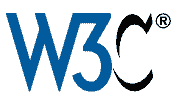In-page Navigation
Status: This is not ready for detailed review. It is an in-progress, unapproved editor’s draft.
Navigation inside of individual pages can help users to orient themselves on the page. Such in-page navigation can also provide users with useful links to sections in the page that are hard to discover. A page prepared to allow links to content on the page allows also that specific content can be shared with other people via URL.
Anchors
Basically everything with an id attribute can be used as an anchor. If the main content is using <div id="content">, attaching #content to the URL will have scroll the main content into view and focus it. They help people bookmarking the page to find the right place and are generally used to easy reference portions of text.
If possible, make those anchors visible by adding permalinks to the page. In this tutorial, you can find permalinks in every heading. They are shown visually by the pilcrow symbol (¶) and with a title attribute that says “permalink”.
Skip links
Skip links are the historically needed links to jump to different sections on the page. They were used before landmarks were implemented in browsers and assistive technologies and can still be useful in some situations.
These tutorials for example have a visually hidden link to the navigation that allows the user to jump directly to the navigation, which comes after the main content of the page. This skip link is hidden by default but made visible as soon as it is focused to not confuse visual keyboard users.
<a href="#navigation" class="visuallyhidden focusable">Jump to navigation</a>
If the viewport is so small that only one column fits on the screen (for examples on mobiles or when zoom is enabled), the link stays visible to allow users to jump to the navigation menu on the bottom of the page.
Table of contents
A table of contents can be a useful way to skim the page by providing an outline for the user. Usually they should be contained in a navigation landmark, so it can be easily discovered. The “on this page” box on every tutorial page is an example for such a table of contents. The anchors on every heading are used to allow users to skip to those headings in the text.
Related WCAG2.0 resources
Success Criteria:
2.4.1 Bypass Blocks: A mechanism is available to bypass blocks of content that are repeated on multiple Web pages. (Level A)
Techniques:

